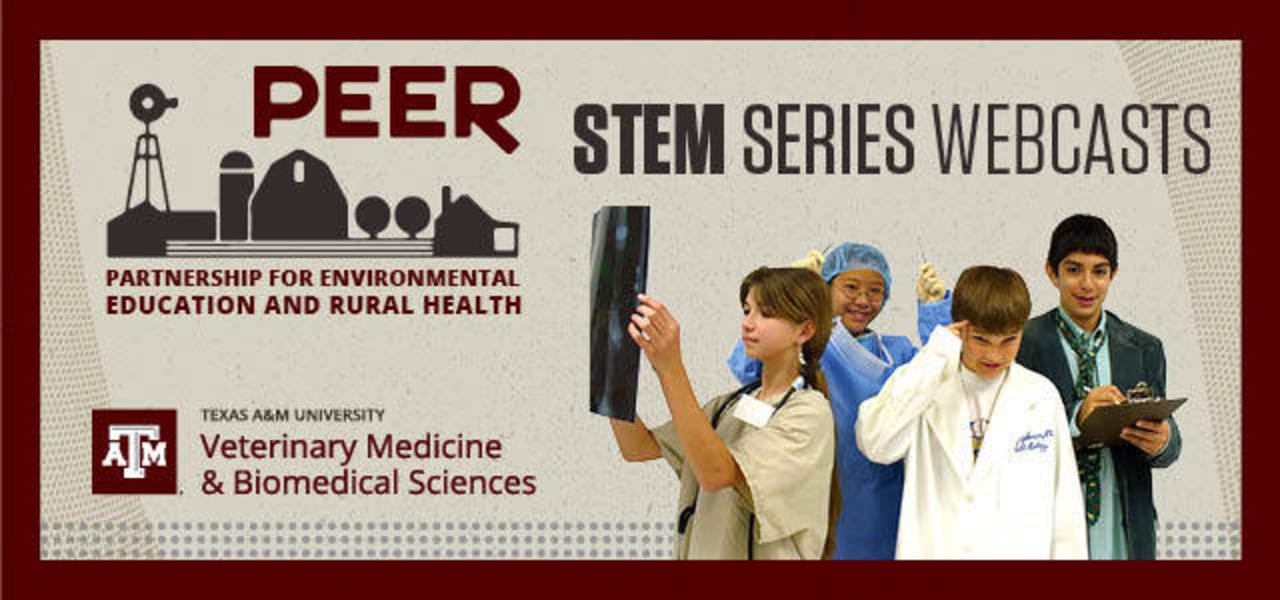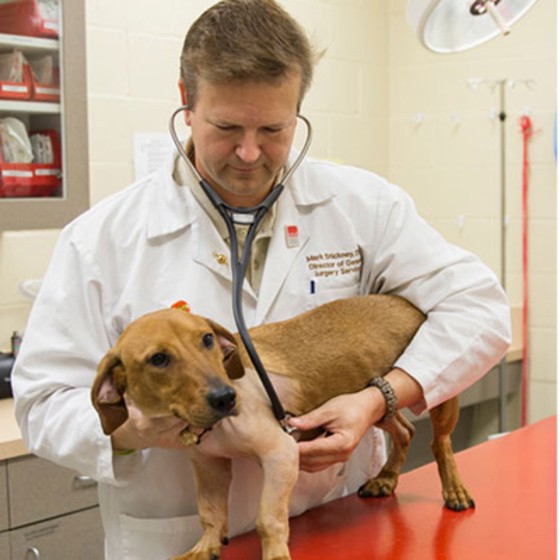


Texas Society For Biomedical Research. ©2016 All Rights Reserved Site developed by FPS Design Studios
Like Us on Facebook!


Examining Plant and Animal Cells - REGISTER HERE
Thu., Jan. 11 at 10:00 am CST
Appropriate for grades 6 through 9
About the webcast: Dr. Larry Johnson, professor of histology at the Texas A&M College of Veterinary Medicine & Biomedical Sciences (CVM), will show vivid microscopic images of the organelles of plant and animal cells (including blood, muscle, and epithelium) and discuss the interaction of cell structure and function. A detailed examination of the cytoplasm and nucleus will reveal how cells differentiate.
Texas Essential Knowledge and Skills (TEKS) standards covered in this webcast include:
6.12(A):
Understand that all organisms are composed of one or more cells.
6.12(B):
Recognize that the presence of a nucleus determines whether a cell is prokaryotic or eukaryotic.
7.12(C):
Recognize levels of organization in plants and animals, including cells, tissues, organs, organ systems, and organisms.
7.12(D):
Differentiate between structure and function in plant and animal cell organelles, including cell membrane, cell wall, nucleus, cytoplasm, mitochondrion, chloroplast, and vacuole.
7.12(E):
Compare the functions of a cell to the functions of organisms such as waste removal.
7.12(F):
Recognize that according to cell theory all organisms are composed of cells and cells carry on similar functions such as extracting energy from food to sustain life.
Biology 5(B):
Examine specialized cells, including roots, stems, and leaves of plants; and animal cells such as blood, muscle, and epithelium.
Biology 5(D):
Recognize that disruptions of the cell cycle lead to diseases such as cancer.
Thu., Jan. 11 at 10:00 am CST
Appropriate for grades 6 through 9
About the webcast: Dr. Larry Johnson, professor of histology at the Texas A&M College of Veterinary Medicine & Biomedical Sciences (CVM), will show vivid microscopic images of the organelles of plant and animal cells (including blood, muscle, and epithelium) and discuss the interaction of cell structure and function. A detailed examination of the cytoplasm and nucleus will reveal how cells differentiate.
Texas Essential Knowledge and Skills (TEKS) standards covered in this webcast include:
6.12(A):
Understand that all organisms are composed of one or more cells.
6.12(B):
Recognize that the presence of a nucleus determines whether a cell is prokaryotic or eukaryotic.
7.12(C):
Recognize levels of organization in plants and animals, including cells, tissues, organs, organ systems, and organisms.
7.12(D):
Differentiate between structure and function in plant and animal cell organelles, including cell membrane, cell wall, nucleus, cytoplasm, mitochondrion, chloroplast, and vacuole.
7.12(E):
Compare the functions of a cell to the functions of organisms such as waste removal.
7.12(F):
Recognize that according to cell theory all organisms are composed of cells and cells carry on similar functions such as extracting energy from food to sustain life.
Biology 5(B):
Examine specialized cells, including roots, stems, and leaves of plants; and animal cells such as blood, muscle, and epithelium.
Biology 5(D):
Recognize that disruptions of the cell cycle lead to diseases such as cancer.

Biomedical Sciences - REGISTER HERE
Square One for One Health Education
Thu., Jan. 18 at 10:00 CST
Appropriate for grades 9 through 12
About the webcast: Does your future include a career in veterinary medicine, human medicine, or other One Health fields? Then Biomedical Sciences might be the course of study for you! Join Dr. Elizabeth Crouch, CVM Associate Dean for Undergraduate Education, as she describes the Biomedical Sciences major. She will provide tips on preparing for a course of study in Biomedical Sciences as well as the many career paths this degree provides.
TEKS standards covered in this webcast include:
High School (All Science Subjects)—3(D):
Evaluate the impact of research on scientific thought, society, and the environment.
High School (All Science Subjects)—3(F):
Research and describe the history of [science subject] and contributions of scientists.
Square One for One Health Education
Thu., Jan. 18 at 10:00 CST
Appropriate for grades 9 through 12
About the webcast: Does your future include a career in veterinary medicine, human medicine, or other One Health fields? Then Biomedical Sciences might be the course of study for you! Join Dr. Elizabeth Crouch, CVM Associate Dean for Undergraduate Education, as she describes the Biomedical Sciences major. She will provide tips on preparing for a course of study in Biomedical Sciences as well as the many career paths this degree provides.
TEKS standards covered in this webcast include:
High School (All Science Subjects)—3(D):
Evaluate the impact of research on scientific thought, society, and the environment.
High School (All Science Subjects)—3(F):
Research and describe the history of [science subject] and contributions of scientists.

Keep It Clean! - REGISTER HERE
Wed., Jan. 24 at 10:00 CST
Appropriate for grades 7 through 10
About the webcast: Dr. Mark Stickney from the Texas A&M Veterinary Medical Teaching Hospital will present "Keep It Clean!" Dr. Stickney will discuss homeostasis, the role of microorganisms in the spread of disease, and how doctors use "aseptic technique" to protect their patients.
TEKS standards covered in this webcast include:
Science 7.13(B):
describe and relate responses in organisms that may result from internal stimuli such as wilting in plants and fever or vomiting in animals that allow them to maintain balance.
Biology 4(B):
Investigate and explain cellular processes, including homeostasis, energy conversions, transport of molecules, and synthesis of new molecules.
Biology 4(C):
Compare the structures of viruses to cells, describe viral reproduction, and describe the role of viruses in causing diseases such as human immunodeficiency virus (HIV) and influenza.
Biology 11(A):
Describe the role of internal feedback mechanisms in the maintenance of homeostasis.
Biology 11(B):
Investigate and analyze how organisms, populations, and communities respond to external factors.
Biology 11(C):
Summarize the role of microorganisms in both maintaining and disrupting the health of both organisms and ecosystems.
Wed., Jan. 24 at 10:00 CST
Appropriate for grades 7 through 10
About the webcast: Dr. Mark Stickney from the Texas A&M Veterinary Medical Teaching Hospital will present "Keep It Clean!" Dr. Stickney will discuss homeostasis, the role of microorganisms in the spread of disease, and how doctors use "aseptic technique" to protect their patients.
TEKS standards covered in this webcast include:
Science 7.13(B):
describe and relate responses in organisms that may result from internal stimuli such as wilting in plants and fever or vomiting in animals that allow them to maintain balance.
Biology 4(B):
Investigate and explain cellular processes, including homeostasis, energy conversions, transport of molecules, and synthesis of new molecules.
Biology 4(C):
Compare the structures of viruses to cells, describe viral reproduction, and describe the role of viruses in causing diseases such as human immunodeficiency virus (HIV) and influenza.
Biology 11(A):
Describe the role of internal feedback mechanisms in the maintenance of homeostasis.
Biology 11(B):
Investigate and analyze how organisms, populations, and communities respond to external factors.
Biology 11(C):
Summarize the role of microorganisms in both maintaining and disrupting the health of both organisms and ecosystems.
About the PEER STEM series webcasts:
PEER collaborates with KAMU-TV to bring live STEM (science, technology, engineering, and mathematics) educational webcasts to K-12 students nationwide. Webcasts feature professors, scientists, veterinary students, technicians, and clinicians who discuss veterinary medical and STEM-related topics aligned with Texas state science standards. Topics range from human and animal health to college preparation and enable K-12 students to make relevant connections between science and real-world careers.
KAMU-TV films each presentation in high definition and they are archived on the PEER YouTube channel for future viewing.
About PEER:
PEER provides multifaceted outreach for science and veterinary medical education. Middle and high school curricula, state and nation-wide video conferencing and webcasts, and presentations to K-12 students stimulate career interest in science, technology, engineering, and mathematics (STEM).
Funding for PEER is composed of three grants: GK-12 Fellows Integrate Science/Math in Rural Middle Schools, Integrating Environmental Health Science in Rural Schools, and Science Promotion in Rural Middle Schools, a Science Education Partnership Award (SEPA).
Major funding for PEER is provided by John Deere, the National Science Foundation (NSF), the
National Institute of Environmental Health Sciences (NIEHS) and the Office of Research Infrastructure Programs (ORIP) at the National Institutes of Health (NIH).
For more information, visit the PEER website at peer.tamu.edu. Follow PEER on Facebook & YouTube
PEER collaborates with KAMU-TV to bring live STEM (science, technology, engineering, and mathematics) educational webcasts to K-12 students nationwide. Webcasts feature professors, scientists, veterinary students, technicians, and clinicians who discuss veterinary medical and STEM-related topics aligned with Texas state science standards. Topics range from human and animal health to college preparation and enable K-12 students to make relevant connections between science and real-world careers.
KAMU-TV films each presentation in high definition and they are archived on the PEER YouTube channel for future viewing.
About PEER:
PEER provides multifaceted outreach for science and veterinary medical education. Middle and high school curricula, state and nation-wide video conferencing and webcasts, and presentations to K-12 students stimulate career interest in science, technology, engineering, and mathematics (STEM).
Funding for PEER is composed of three grants: GK-12 Fellows Integrate Science/Math in Rural Middle Schools, Integrating Environmental Health Science in Rural Schools, and Science Promotion in Rural Middle Schools, a Science Education Partnership Award (SEPA).
Major funding for PEER is provided by John Deere, the National Science Foundation (NSF), the
National Institute of Environmental Health Sciences (NIEHS) and the Office of Research Infrastructure Programs (ORIP) at the National Institutes of Health (NIH).
For more information, visit the PEER website at peer.tamu.edu. Follow PEER on Facebook & YouTube